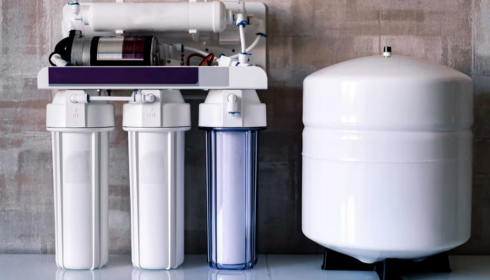There’s something about turning on the tap, filling a glass, and actually trusting the water you’re drinking. For a lot of people, that’s not the case anymore. Concerns about contaminants, strange tastes, or just wanting peace of mind have led many homeowners to explore reverse osmosis (RO) systems. If you’ve ever wondered whether these systems are worth the hype—or more importantly, the investment—you’re not alone. I’ve been down this rabbit hole myself, and let me tell you, the deeper you dig, the more sense it starts to make.
The Appeal of Reverse Osmosis
Reverse osmosis isn’t just another fancy filter. It’s a process that pushes water through a semipermeable membrane, stripping away contaminants that basic carbon filters can’t always catch. We’re talking heavy metals, nitrates, PFAS (those “forever chemicals”), and even bacteria in some cases. That’s why folks who rely on private wells, or who just don’t love the idea of relying solely on municipal treatment, are giving it a second look.
What makes it appealing is that it’s relatively low-maintenance once set up. Sure, you’ll need to change filters periodically, but the difference in water taste alone can feel like you’ve upgraded from tap to bottled quality without the endless trips to the store.
Understanding the Cost Factor
Of course, it’s impossible to talk about these systems without tackling the elephant in the room: price. The cost of reverse osmosis system setups can vary wildly depending on what you’re buying and where you’re installing it. A simple under-sink system might run you a few hundred dollars, while a whole-house system—designed to handle every faucet and shower—can easily climb into the thousands.
But here’s the perspective shift: compare that upfront cost to years of bottled water purchases, or the long-term health implications of consuming contaminants you didn’t even know were there. Suddenly, it’s less of a luxury and more of an investment in your family’s well-being. And unlike some home gadgets that gather dust, this is one you’ll use every single day.
Why Well Owners Should Pay Extra Attention
For households drawing water from wells, the stakes are higher. Unlike city water, which goes through treatment before reaching your home, well water is your responsibility. Testing often reveals high levels of iron, manganese, or even arsenic depending on your region.
That’s where finding the best reverse osmosis system for well water becomes crucial. Not every RO unit is cut out to handle those unique challenges. Some require pre-filtration to avoid clogging the membrane, while others are built tougher specifically for rural or agricultural areas. If you’ve ever noticed reddish stains in your sinks or that metallic aftertaste in your glass, you already know how real the problem is. An RO system designed for wells can change the entire experience of using water at home.
Local Stories and Regional Needs
Water quality is deeply local. Take Long Island, for example. The aquifers there are under constant scrutiny due to everything from industrial contamination to overuse. Residents have become increasingly cautious about what’s coming out of their taps. In fact, many homeowners specifically search for a reverse osmosis system long island solution that’s tailored to their area’s concerns. It’s not paranoia—it’s simply being informed.
I’ve spoken with folks who said the switch to RO didn’t just improve their water taste, it gave them peace of mind knowing they weren’t gambling with hidden contaminants. And honestly, when you’ve got kids, that peace of mind is priceless.
Everyday Benefits You Actually Notice
Let’s step away from the science for a moment. What’s it like to live with one of these systems day-to-day? Well, for starters, your coffee tastes better. Tea tastes sharper, less muddled. Cooking with filtered water means your pasta, soups, even bread come out tasting cleaner. If you’ve ever noticed your ice cubes looking cloudy or giving your drinks a weird aftertaste, RO ice is crystal clear.
Then there’s the convenience: no more hauling 24-packs of bottled water every week, no more filling up jugs at a refill station. Your sink becomes your personal hydration station, and the fridge filter you used to rely on suddenly feels redundant.
Balancing Maintenance and Longevity
Now, I won’t sugarcoat it—maintenance is part of the package. Filters need changing, membranes eventually wear out, and if you’re running a whole-house setup, you’ll want occasional professional checkups. But the timeline isn’t ridiculous. Most filters last six months to a year, and membranes can stretch three to five years if cared for properly.
Think of it like owning a car. You wouldn’t drive 50,000 miles without an oil change and expect everything to run perfectly. Same deal here: small, regular maintenance ensures the system keeps delivering the results you paid for.
Myths That Need Clearing Up
There are a couple of misconceptions that deserve to be addressed. First, people sometimes claim RO water is “too pure” and strips away healthy minerals. Technically, yes, it removes calcium, magnesium, and such. But most of us get those minerals from food, not tap water. And if it matters to you, remineralization filters can be added to restore balance.
Another myth is that these systems waste an outrageous amount of water. Early models did, but modern units are much more efficient. Many now recover and reuse water in clever ways, cutting down waste dramatically.
Is It the Right Choice for You?
Here’s the million-dollar question: should you buy one? The answer depends on your priorities. If your water already tastes fine, your tests show low contaminant levels, and bottled water isn’t straining your budget, maybe it’s not urgent. But if you’re tired of guessing what’s in your glass, or you’re living in an area where water quality is a constant question mark, then it’s worth serious consideration.
An RO system doesn’t just filter your water—it reshapes your relationship with it. You stop worrying about cloudy ice cubes or whether the baby’s formula is safe to mix straight from the tap. You start trusting what you’re drinking again. That’s a hard thing to put a price tag on.
Final Thoughts
Water is one of those essentials we take for granted until something feels off. A smell, a taste, a piece of news about local contamination—it’s enough to spark doubt. And once that doubt creeps in, it’s hard to shake. That’s why reverse osmosis has carved out a permanent place in the conversation around home water solutions.
The upfront expense, the filter changes, the learning curve—they’re all real. But so are the benefits: confidence, convenience, and clarity every time you pour a glass. If you’ve been hesitating, maybe this is your sign to stop waiting and start exploring your options.
After all, the glass of water you drink today is the one fueling your tomorrow. Shouldn’t it be as clean and safe as possible?

